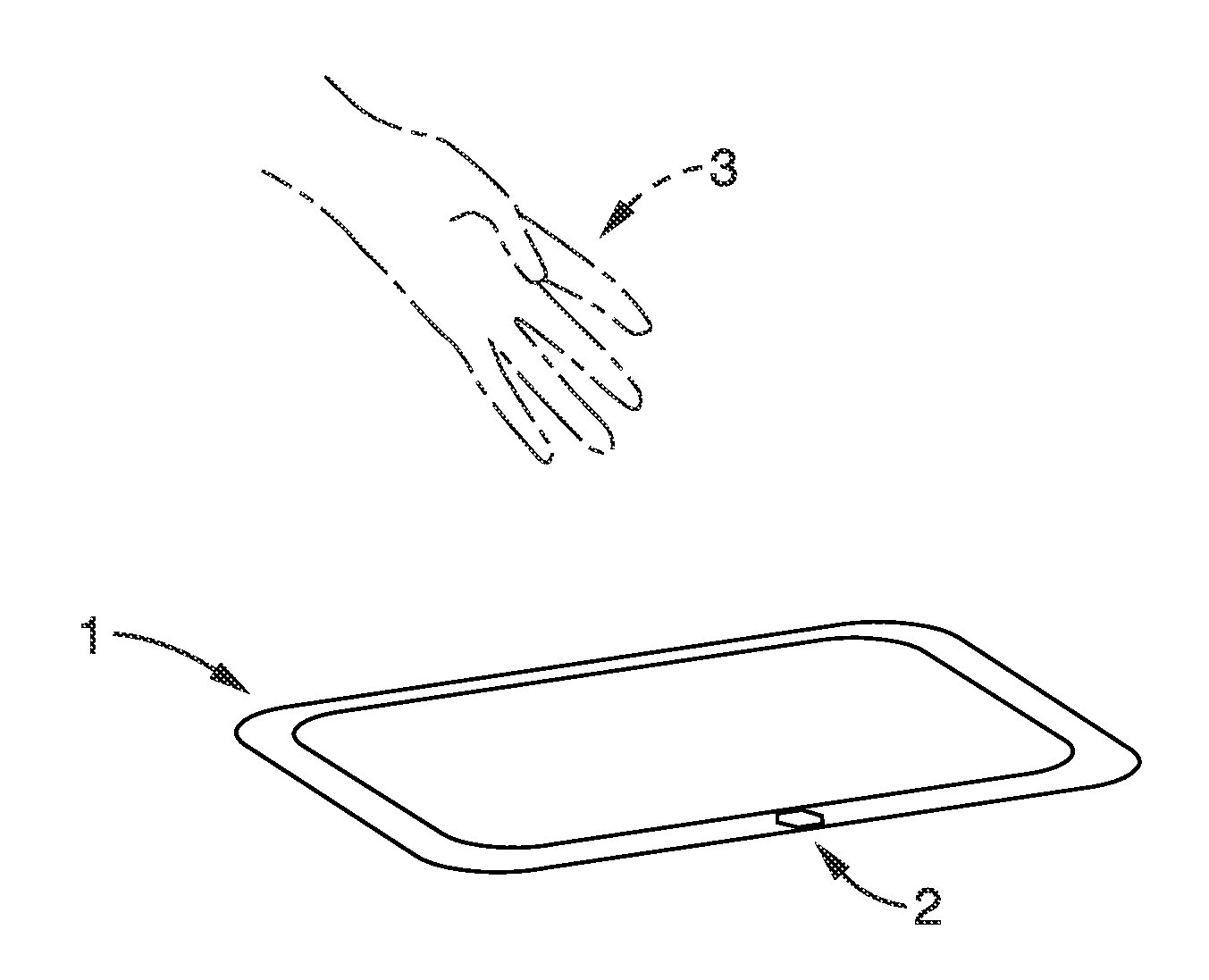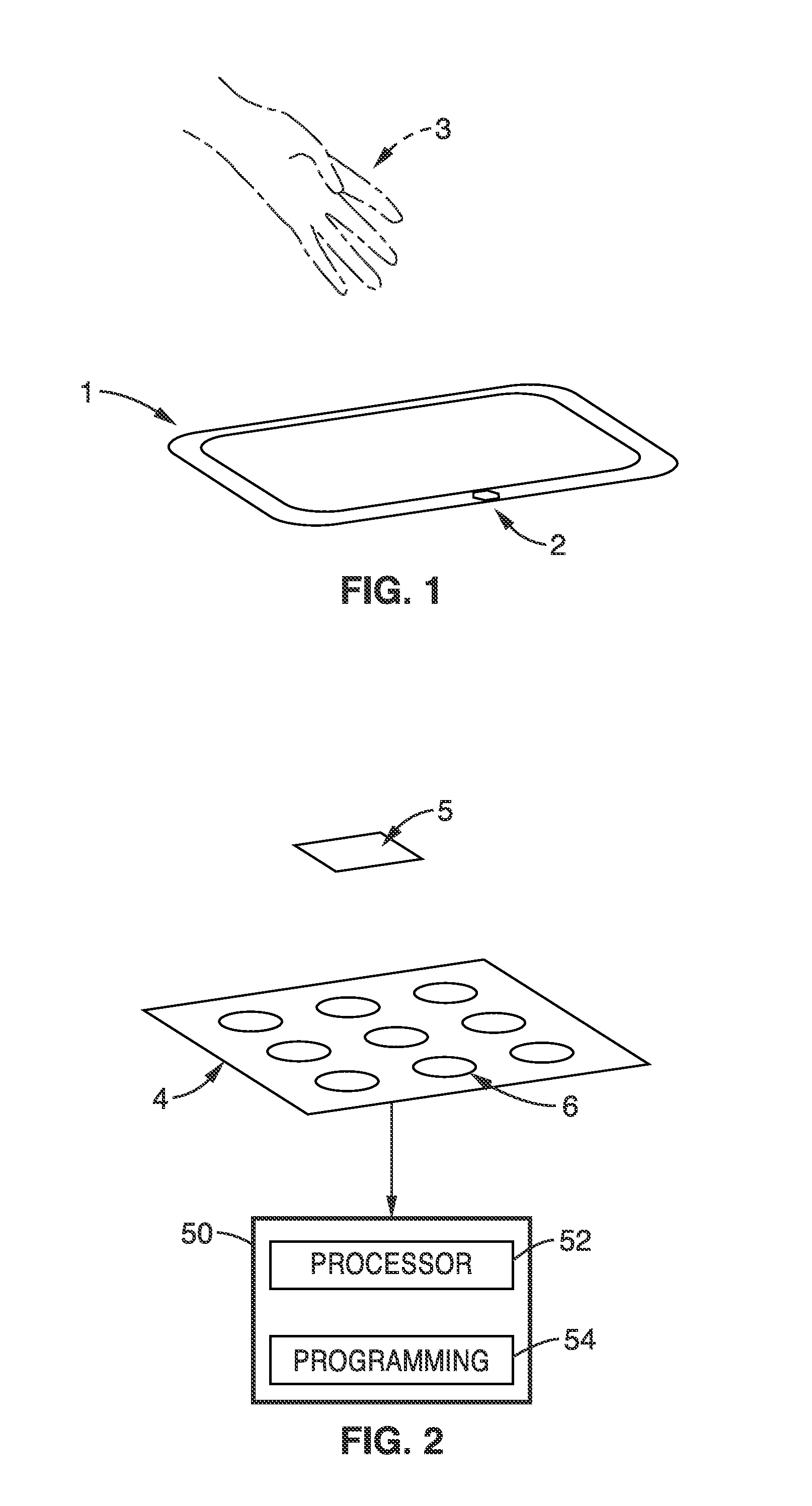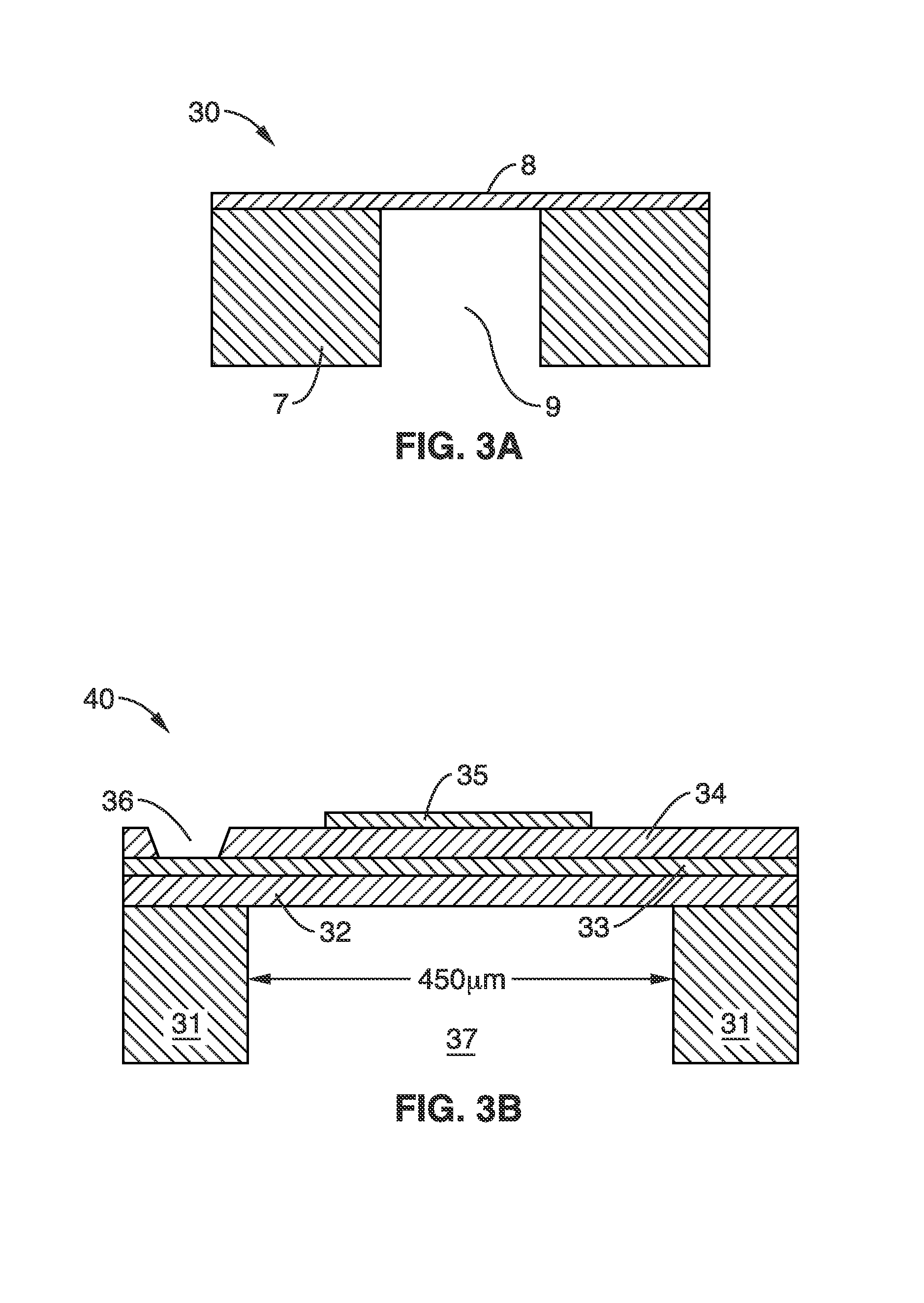In-air ultrasonic rangefinding and angle estimation
an ultrasonic rangefinding and angle estimation technology, applied in the field of sensor systems, can solve the problems of large size of optical 3d imagers for gesture recognition, high power consumption, and general inability to operate in sunlight, and achieve the effect of less power
- Summary
- Abstract
- Description
- Claims
- Application Information
AI Technical Summary
Benefits of technology
Problems solved by technology
Method used
Image
Examples
Embodiment Construction
[0034]The present invention generally comprises an ultrasonic depth sensor which can be used to measure the position and configuration of a user's hand(s) with respect to an electronic device (hereafter “computer”) in order for the user to generate input into the computer. The sensor may be configured to detect motions of the user's entire hand or individual fingers. The computer translates the user's motions into input commands for the computer, and may generate visual, audio, or tactile feedback to the user.
[0035]The system of the present invention differs from prior approaches in several ways. For example, the system of the present invention also uses pulse-echo excitation and closely spaced arrays of transducers, where the phase and amplitude of the transducers can be controlled to provide angular resolution.
[0036]FIG. 1 shows an embodiment of a sensor system according to the present invention. Computer 1 has a depth sensor 2 mounted on it such that sound waves are emitted towar...
PUM
 Login to View More
Login to View More Abstract
Description
Claims
Application Information
 Login to View More
Login to View More - R&D
- Intellectual Property
- Life Sciences
- Materials
- Tech Scout
- Unparalleled Data Quality
- Higher Quality Content
- 60% Fewer Hallucinations
Browse by: Latest US Patents, China's latest patents, Technical Efficacy Thesaurus, Application Domain, Technology Topic, Popular Technical Reports.
© 2025 PatSnap. All rights reserved.Legal|Privacy policy|Modern Slavery Act Transparency Statement|Sitemap|About US| Contact US: help@patsnap.com



